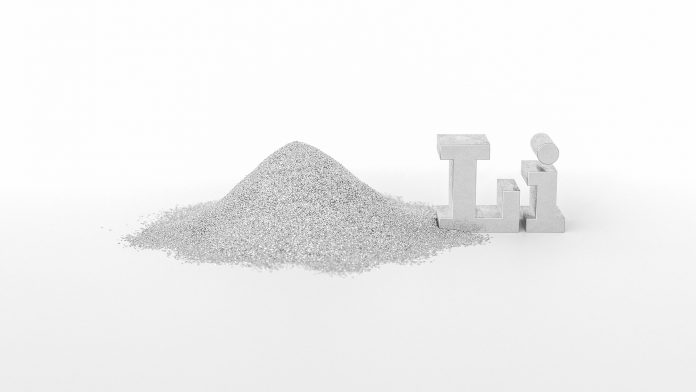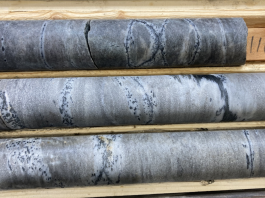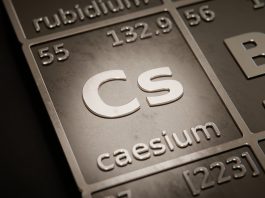Sokoman Minerals Corp and Benton Resources Inc. have announced the final assays from the Phase 3 drill programme at the Golden Hope Joint Venture.
The Golden Hope drilling programme totalled 1,607m in 11 drill holes, including initial drilling on the Killick Zone, the Kraken Dyke, and the Kraken West Dyke.
Tim Froude, President and CEO of Sokoman, commented: “We are very pleased with the latest results from the Golden Hope joint venture. Killick is turning into an interesting and higher-grade zone, and combined with the soil geochemical results, this means we still do not know the full extent of the lithium and other critical minerals potential on this property. It remains entirely possible that the best mineralisation may be as yet untouched, and we look forward to an exciting year at Golden Hope.”
What results did the programme yield?
All three holes drilled at the Killick Zone (GH-22-25 to 27) gave the best lithium intersections on the project to date as follows:
- GH-22-25– multiple spodumene-bearing pegmatite dykes with 74m of 0.64% Li2O, including 5.73m of 0.92% Li2O;
- GH-22-26– 26m behind GH-22-25 – multiple spodumene-bearing pegmatite dykes with 5m of 1.08% Li2O, including 2.15m of 2.01% Li2O; and
- GH-22-27– 30 m N of holes 25 and 26 along strike – 23 m of 1.04% Li2O, including 4.18 m of 1.48% Li2O and 2.98 m of 1.23% Li2O.
The Killick Zone remains open in all directions.
Six holes tested the Kraken Discovery Zone (see Figure 1)) with three, GH-22-28, 29, and 35 intersecting multiple spodumene-bearing pegmatite dykes, including 2.10m of 1.02% Li2O in hole GH-22-28, 2.10m of 1.18% Li2O in hole GH-22-29 and 1.50m of 1.25% Li2O in hole GH-22-35.
Two drill holes on the Kraken West Dyke and one hole on the Kraken Discovery Zone had no visible spodumene, with only narrow (<1m) pegmatite dykes in hole GH-22-30. A summary of the results follows in Table 1. Drill locations are shown in Figure 1, cross-sections in Figures 2 and 3 and lithium in soil data in Figure 4.
Soil geochemistry continues to expand the overall footprint of potential lithium- (+/- caesium, tantalum and rubidium) enriched dykes at least 2,000 m to the northeast of the known mineralisation at the Killick Zone (see Figure 4). Soil anomalies in lithium are of a similar tenor (less than the detection limit to 390 ppm Li) to those over known mineralisation that have recently been received and are priority prospecting targets for this spring.
A minimum 5,000m Phase 4 drill programme is planned to begin in early spring, along with continued prospecting, geological mapping, and soil geochemistry to continue through 2023.
Table 1 – Summary of Drill Results – Phase 3 drilling
| DDH # | Target | From(m) | To(m) | Length(m)* | Li2O % | |
| GH-22-25 | Killick Zone | 31.43 | 34.40 | 2.97 | 0.74 | |
| and | 59.32 | 74.06 | 14.74 | 0.64 | ||
| incl | 62.80 | 64.46 | 1.66 | 1.03 | ||
| and | 65.80 | 70.53 | 4.73 | 1.05 | ||
| GH-22-26 | Killick Zone | 73.70 | 75.81 | 2.11 | 0.85 | |
| and | 85.15 | 94.65 | 9.50 | 1.08 | ||
| incl | 91.25 | 93.40 | 2.15 | 2.01 | ||
| GH-22-27 | Killick Zone | 26.82 | 42.05 | 15.23 | 1.04 | |
| incl | 26.82 | 31.00 | 4.18 | 1.48 | ||
| and | 29.60 | 30.30 | 0.70 | 2.05 | ||
| GH-22-28 | Kraken Discovery Zone | 4.39 | 15.36 | 10.97 | 0.32 | |
| incl | 14.05 | 15.36 | 1.31 | 1.39 | ||
| and | 41.45 | 43.55 | 2.10 | 1.02 | ||
| and | 52.20 | 54.85 | 2.65 | 0.64 | ||
| GH-22-29 | Kraken Discovery Zone | 36.30 | 38.40 | 2.10 | 1.18 | |
| and | 57.50 | 59.00 | 1.50 | 1.38 | ||
| GH-22-30 | Kraken West Dyke | NVS | ||||
| GH-22-31 | Kraken West Dyke | NDI | ||||
| GH-22-32 | Kraken Discovery Zone | 2.80 | 4.50 | 1.70 | 0.24 | |
| GH-22-33 | Kraken Discovery Zone | NDI | ||||
| GH-22-34 | Kraken Discovery Zone | 38.25 | 39.25 | 1.00 | 0.25 | |
| GH-22-35 | Kraken Discovery Zone | 85.40 | 90.65 | 5.25 | 0.55 | |
| incl | 88.40 | 89.90 | 1.50 | 1.25 |
* Core lengths – true thickness believed to be 90% of core lengths
NVS – no visible spodumene
NDI – no dyke (pegmatite) intersected




What is next for the Golden Hope project?
Sokoman and Benton have applied for a drill permit for the newly discovered Hydra Zone, where a caesium +/-lithium/tantalum/rubidium-rich dyke was discovered in late 2022, 12km to the northeast of the Kraken Dyke Swarm. Channel sampling of the dyke gave values of 1.20m @ 8.76% Cs2O, 0.405% Li2O, 0.025% Ta2O5, and 0.33% Rb2O, including 0.40m @ 13.57% Cs2O, 0.316% Li2O, 0.012% Ta2O5, and 0.38% Rb2O. Recentcesium, lithium, tantalum, and rubidium results extend the caesium-rich dyke(s) to at least a 60m strike length, remaining open to the north, south, and to depth. Results of three grab samples of coarse-grained pegmatite, located up to 40m to the north of the channel samples, ranged from 133 to 4,210 ppm Cs, 53 to 852 ppm Li, 71 to 98 ppm Ta, and 201 to 3,410 ppm Rb.
Stephen Stares, President and CEO of Benton, concluded: “Benton is extremely pleased with the new results, especially with the new Killick discovery, which is wide open for expansion in every direction. To date, every drill programme has been very successful and has provided excellent information that continues to guide us into the next drill phase and exploration follow-up. We are looking forward to our upcoming spring-summer programme and the potential of our continued success in discovering these critical metals.”









